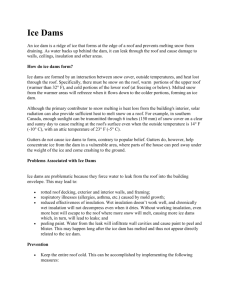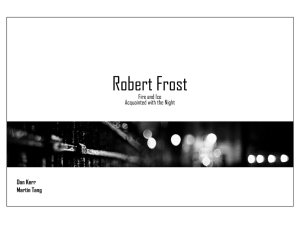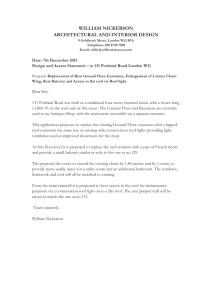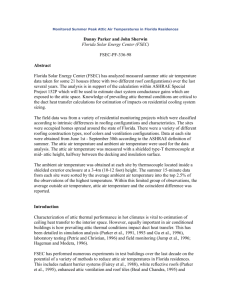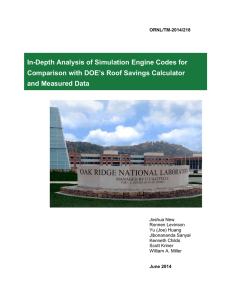WHICH OF THE FOLLOWING ROOF LEAK DO YOU HAVE? The first
advertisement
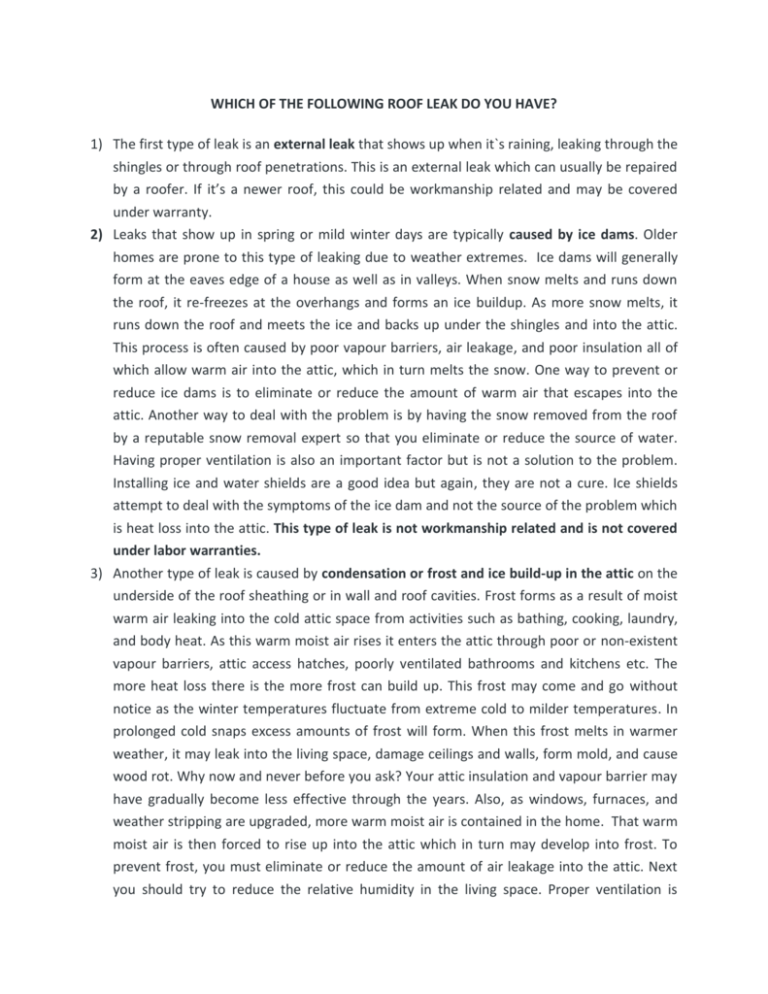
WHICH OF THE FOLLOWING ROOF LEAK DO YOU HAVE? 1) The first type of leak is an external leak that shows up when it`s raining, leaking through the shingles or through roof penetrations. This is an external leak which can usually be repaired by a roofer. If it’s a newer roof, this could be workmanship related and may be covered under warranty. 2) Leaks that show up in spring or mild winter days are typically caused by ice dams. Older homes are prone to this type of leaking due to weather extremes. Ice dams will generally form at the eaves edge of a house as well as in valleys. When snow melts and runs down the roof, it re-freezes at the overhangs and forms an ice buildup. As more snow melts, it runs down the roof and meets the ice and backs up under the shingles and into the attic. This process is often caused by poor vapour barriers, air leakage, and poor insulation all of which allow warm air into the attic, which in turn melts the snow. One way to prevent or reduce ice dams is to eliminate or reduce the amount of warm air that escapes into the attic. Another way to deal with the problem is by having the snow removed from the roof by a reputable snow removal expert so that you eliminate or reduce the source of water. Having proper ventilation is also an important factor but is not a solution to the problem. Installing ice and water shields are a good idea but again, they are not a cure. Ice shields attempt to deal with the symptoms of the ice dam and not the source of the problem which is heat loss into the attic. This type of leak is not workmanship related and is not covered under labor warranties. 3) Another type of leak is caused by condensation or frost and ice build-up in the attic on the underside of the roof sheathing or in wall and roof cavities. Frost forms as a result of moist warm air leaking into the cold attic space from activities such as bathing, cooking, laundry, and body heat. As this warm moist air rises it enters the attic through poor or non-existent vapour barriers, attic access hatches, poorly ventilated bathrooms and kitchens etc. The more heat loss there is the more frost can build up. This frost may come and go without notice as the winter temperatures fluctuate from extreme cold to milder temperatures. In prolonged cold snaps excess amounts of frost will form. When this frost melts in warmer weather, it may leak into the living space, damage ceilings and walls, form mold, and cause wood rot. Why now and never before you ask? Your attic insulation and vapour barrier may have gradually become less effective through the years. Also, as windows, furnaces, and weather stripping are upgraded, more warm moist air is contained in the home. That warm moist air is then forced to rise up into the attic which in turn may develop into frost. To prevent frost, you must eliminate or reduce the amount of air leakage into the attic. Next you should try to reduce the relative humidity in the living space. Proper ventilation is important but it only deals with the symptoms and not the source of the problem. This type of leak is not workmanship related and is not covered under labor warranties. If your roof only leaks in the spring thaw and does not leak when it rains, then it probably isn’t an external roof leak. For most of us, our home is our biggest investment. Make us your First Choice to inspect and address the cause of your leak.


